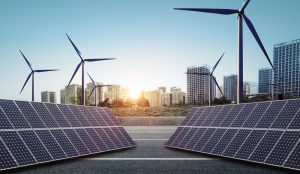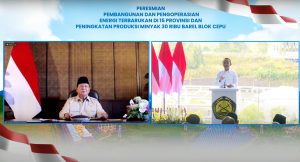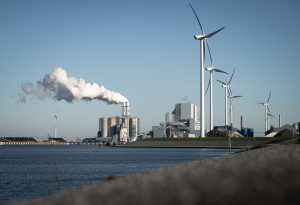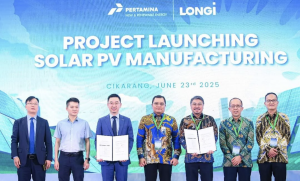Jakarta – Global energy think tank organisation Ember in their latest report on the status of renewable energy developments in ASEAN countries entitled “Unleashing Solar and Wind in ASEAN”, released on Thursday (7/7), stated that behind the abundant solar and wind energy in Indonesia, utilisation is only about 0.2 percent of total electricity generation in 2021, far below the ASEAN average of 4 percent and the global average of 10 percent.
The latest Electricity Supply Business Plan (RUPTL) document only targets to increase the portion to 2 percent by 2030. In the 2021-2030 state electricity company (PLN) document, Indonesia plans to increase its solar power generation capacity by 4.68 gigawatts (GW) and bayu (wind) 0.6 GW by 2030.
Ember Asia Electricity Analyst, Achmed Edianto said the Indonesian government must maximise solar and wind energy, as China, India and most countries in the world have done. As fossil fuel prices soar, solar and wind energy prices remain low and provide affordable local energy.
“Solar and wind energy are starting to expand across Southeast Asia, but more aggressive targets and timely execution are needed to harness the huge potential. The government needs to review the 2030 energy plan,” said Edianto.
Solar and wind energy will be the backbone of the world’s electricity system in the future, but current electricity plans in ASEAN countries do not reflect this. The IEA’s Net Zero report shows 40 percent of global electricity supply must come from solar and wind by 2030. More ambitious solar and wind development plans in ASEAN are needed to align with the 1.5 degree goal.
Based on the study, among the 10 ASEAN member countries, five countries, namely Indonesia, Malaysia, the Philippines, Thailand, and Vietnam (ASEAN 5), accounted for 89 percent of the total power generation in ASEAN. In its report, it is said that the share of solar and wind power generation in 2030 will be the lowest among ASEAN 5.
The projected growth rate of Indonesia’s electricity demand is one of the highest, at 4.9 percent per year. At this rate, only 5 percent of the increase in demand will be met by the sun and wind.
“However, by 2030, the latest energy plan documents issued by ASEAN 5 will only increase the share of solar and wind power to 11 percent of the region’s total electricity supply,” the report said.
By 2030, Vietnam will generate 18 percent of electricity from solar and wind, the Philippines 16.5 percent, and Thailand 9.6 percent. Meanwhile Malaysia and Indonesia will only reach 3.4 percent and 2 percent respectively.
The report also finds that clean energy growth is not keeping pace with electricity demand, which in turn leads to more use of fossil fuels. Clean energy only meets 39 percent of the increase in electricity demand in the five largest power generating countries in ASEAN from 2015 to 2021, and 48 percent is met by fossil fuels. Therefore, the CO2 emissions of the electricity sector in these countries increased by 21 percent.
It was also reported that solar and wind energy generated only 4 percent of ASEAN’s electricity last year, lagging behind neighbouring countries such as China (11 percent) and India (8 percent). Only Vietnam (11 percent) exceeds the world average in terms of solar and wind energy use, where by 2021, for the first time, the world will generate 10 percent of its electricity from solar and wind energy. (Hartatik)













